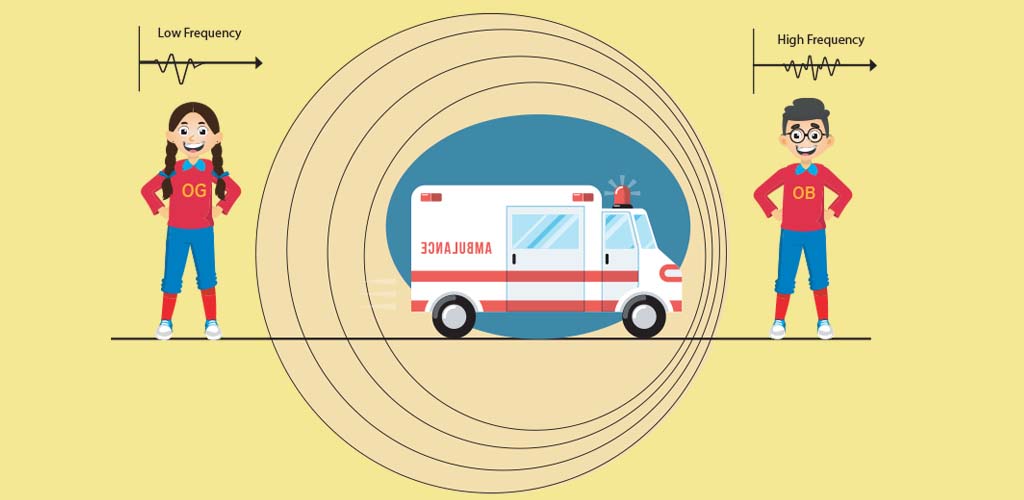Physics in Everyday Life: Facts, Examples, and Importance
By Prakriti Dhodare |
Date 09-08-2024

Physics in Everyday Life
Table of Contents
Admissions Open for
Definition of Physics
Physics is a field of study that examines matter, including its composition, nature, and properties. It also examines heat, mechanics, light, electricity, magnetism, the structure of atoms, and sound.
We live in an era in which science and technology has become a part of our everyday life. Even in the pre-scientific era, human’s everyday life was governed by several principles of physics in our daily life. They were just not aware of the concept. Simplest functions like walking, cutting, and cooking can only be explained through concepts of physics. Physics is a significant aspect of modern culture and human history. Its advancement has aided numerous other human endeavors, including economic development, space exploration, and telecommunications.
Physics Facts in Everyday Life:
- Sound waves can generate heat.
- You are using a touchscreen phone only because of conductivity. Electricity and electromagnets are the underlying concepts of cell phones.
- Transparent objects are visible because they reflect light.
- Without friction, you won’t be able to walk.
Example of Physics in Everyday Life with Explanation
1) Have you ever wondered how you could see the image of anything in the water? The clear water surface acts like a smooth reflecting top; it reflects light when the image strikes the surface. However, we can see our image in the water.
2) It must have caught your attention that pushing against the hinges of a swinging door makes it difficult to open, while pushing away from the hinges makes it simple. Torque’s physical applicability is evident in this situation. The force that propels rotation is known as torque.
3) The gravitational force is common in many aspects of daily life. For instance, gravity is necessary for playing, sliding, jumping, and running. A person will only fall downward if they jump off a building. In zero-gravity space, it would be impossible for someone to jump using the same technique.

Advantages of Physics in Everyday Life
Alarm Clock

When an alarm clock rings, the molecules present nearby vibrate. The vibration causes the other molecules to vibrate as well. An alarm clock releases a wave of energy that triggers the human brain.
Steam Iron

The concept of the electric iron is based upon the principle of the heating effect of current. Due to the resistance present in it, an electric current passing through a conductor generates heat. A steam iron uses superheated water to eliminate creases in clothing and fabrics. Along with this, iron weight forces them to adopt a new shape.
Ball Pen

Gravity is the fundamental factor in the ball pen concept. The ink is transferred to the paper as your pen glides over the page. It rotates the ball, and gravity pulls the ink down onto its top. So, if physics had not been there, you would not have been able to write with a ballpoint pen on paper.
Doppler Radar

To check for over speeding vehicles, police often use Doppler Radar. It works on the principle of the Doppler Effect. Whenever the source of the sound moves concerning the listener, the sound’s pitch changes. The reason for this is that as the sound source travels nearer or farther away from the listener, the frequency of the sound wave changes.
Importance of Physics in Everyday Life
Physics explains, how the world functions around us. Every action we perform in daily life has a direct or indirect connection to the concepts of physics in daily life, such as walking, drinking, jumping, etc. Electronic devices such as phones, computers, bluetooth speakers, alarm clocks, air conditioners, etc., follow the laws of physics. These kinds of devices help humans to make their work easier and more efficient.
How Does Physics Affect Our Daily Life?
Physics concepts and laws, such as the law of motion, the law of attraction, friction, potential energy, kinetic energy, gravitational force, etc., help us to unravel the reason behind most of the activities we perform in our daily life. We can not disconnect our world from physics as innovation is almost impossible without understanding the concepts of physics.
Frequently Asked Questions
1. Who is the Father of Physics?
Answer: Galileo Galilei, Isaac Newton, and Albert Einstein are the fathers of physics. Because of their various contributions, all three are considered the founders of modern physics. Newton was given the name due to his Law of Motion and Gravity. Galileo is called so because of his scientific revolution and his contribution to observational astronomy, and Einstein for his Theory of Relativity.
2. What is Newton’s First Law of Motion?
Answer: Newton’s First Law states that if the body is in a uniform or constant motion, it will remain in the same motion until some external force acts. It is also known as the Law of Inertia.
3. What are the 20 applications of physics that are used in our everyday lives?
Answer:
Here are 20 practical applications of physics in our lives:
Electricity and Lighting:
Physics rules the electrical appliance in our houses, with lighting and powering the appliances in our houses.
Heating and Cooling Systems:
It is possible to control temperatures in our houses by heaters, air conditioners, thermodynamics, etc.
Automobiles and Transportation:
Physics explains forces, friction, and energy transformation for a car engine, brakes, and fuel efficiency.
Smartphones and Computers:
Microelectronics and quantum mechanics make our digital equipment smaller, faster, and more powerful.
GPS and Navigation:
Physics principles through satellite enable GPS to provide very accurate location data for directing and mapping purposes.
Medical Imaging:
X-rays, MRI, and ultrasound medical imaging technologies rely on physics to provide detailed images that assist in diagnosis.
Musical Instruments:
Acoustics, part of physics, help in the design and optimization of instruments towards the right wave sounds for music.
Vision and Eyeglasses:
Optics is the science about how lenses correct vision to clear up for millions
Cooking Appliances:
Microwaves, ovens and stoves use principles of heat transfer and radiation to prepare food efficiently.
Refrigeration:
Physics in thermodynamics makes refrigeration possible, keeping food good by keeping it cold.
Sound Systems and Speakers:
Physics in acoustics enhanced sound quality in speakers and headphones and other audio producing equipment.
Airplane Flight:
Physics governs what is lift, thrust and aerodynamics that make possible for planes to fly at ease and safety.
Batteries and Power Storage:
It is in the branch of physics that it could store and discharge energy in powering billions of portable devices by use of a battery.
Television and Display Screens:
Physics has made sure, from LED to OLED, the TV, computer, or even phones can be watched very clearly and brightly.
Internet and Wi-Fi:
The physics of electromagnetic waves enable wireless data transmission and connectivity.
Bridges and Buildings:
Structural engineering and material science within the scope of physics will make sure that buildings and bridges are standing safely, without falling.
Weather Forecasting:
Meteorology employs atmospheric physics for weather forecasts so that we know what to expect the next day.
Automated Sensors:
Physics-based motion, temperature, and pressure sensors in smart homes and devices add functionalities to them.
Renewable Energy:
Physics technologies, such as solar panels and wind turbines, make way for cleaner and greener energy sources.
Sports and Exercise Equipment:
Physics in designing sports equipment enhances better performance, safety, and efficiency in sports.
4.How is physics used in everyday life?
Answer:
Related Blogs
Percentage to CGPA Calculator: Find out how to turn percentage into CGPA with our comprehensive step-by-step guide.
List of Top 100 Wild Animals in English: Discover the top 100 animals in English.
Animals and Their Homes: Explore animals and their habitats with our informative blog.
Gravity Formula: Know more about Formula of Gravity through our latest blog.
Rhyming Words for Kids: Find rhyming words in English and peruse our detailed list for children.
Gravitational Force Formula: Learn more about Gravitational Force Formula through out latest blog.
Other Related Sections
NCERT Solutions | Learning Concepts I Sample Papers | CBSE SYLLABUS | Calculators | Converters | Stories For Kids | Poems for kids I Practice Worksheets I Formulas I Parent Resources
CBSE Schools In Popular Cities
- CBSE Schools in Bangalore
- CBSE Schools in Mumbai
- CBSE Schools in Pune
- CBSE Schools in Hyderabad
- CBSE Schools in Chennai
- CBSE Schools in Gurgaon
- CBSE Schools in Kolkata
- CBSE Schools in Indore
- CBSE Schools in Sonipat
- CBSE Schools in Delhi
- CBSE Schools in Rohtak
- CBSE Schools in Bhopal
- CBSE Schools in Aurangabad
- CBSE Schools in Jabalpur
- CBSE Schools in Jaipur
- CBSE Schools in Jodhpur
- CBSE Schools in Nagpur
- CBSE Schools in Ahmednagar
- CBSE School In Tumkur

Call Us to know more about Orchids
Swipe Up

















